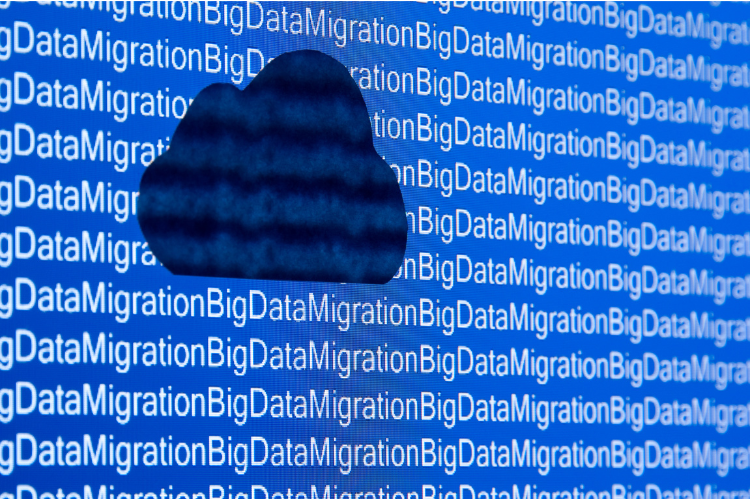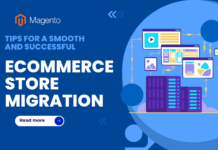
Effective data management is crucial for a company’s success in today’s business environment. Data plays a central role in decision-making and operations, often making database migration necessary for many businesses. This process, though intricate, can yield substantial benefits like better performance, greater scalability, and more robust security when carried out correctly.
To achieve a smooth and secure database migration, meticulous planning and careful implementation are essential. This article details the vital steps and factors businesses must consider to ensure their database migration process succeeds.
Table of Contents
I. Understanding Database Migration
Database migration—moving data from one environment to another—has become necessary for businesses seeking to leverage the latest technologies for improved performance and cost efficiency. This shift involves the physical relocation of data. It encompasses the need for the migration process to be both smooth and secure, ensuring business continuity and the integrity of sensitive information.
1.1. Types of Database Migrations
Database migrations are diverse and heavily depend on a business’s specific needs and goals. They might involve transitioning from an on-premise server to a cloud-based system, shifting from one database platform to another, or updating to a more recent version of the existing database. To navigate these varied scenarios, businesses often turn to database migration services, which can help address the unique challenges and capitalize on the benefits each type of migration offers.
1.2. Common Reasons for Database Migrations
The driving forces behind the decision to migrate databases include but are not limited to, achieving cost efficiency, enhancing performance, and integrating new technology upgrades. The end goal is often to position the business for scalability and increased competitive advantage.

1.3. Challenges of Database Migration
Database migration is not without its risks and challenges. Businesses often face data loss, significant downtime, issues with data integrity, and compatibility problems with new systems. Additionally, the migration process poses potential security risks, making a secure migration paramount.
II. Planning for Migration
A successful migration hinges on meticulous planning and preparation. This planning process involves several critical steps:
- Assessment of the existing database and business needs: Understanding the current environment and what the company aims to achieve with the migration is essential.
- Choosing the correct migration tools and services: Numerous tools are available, but select ones that best suit the migration’s needs.
- Developing a migration strategy that minimizes downtime: Plan the migration to ensure minimal impact on day-to-day operations.
- Testing the migration plan in a controlled environment: Before full implementation, test the migration plan to iron out any issues.
III. Best Practices for Smooth Migration
Ensuring a smooth migration process involves adhering to a set of best practices:
- Data backup: Prioritize backing up all data before migrating to prevent potential loss.
- Phased migration: Consider implementing the migration in phases to minimize risks and make the process more manageable.
- Data verification: After migration, verify the integrity and completeness of the data.
Incorporating these practices, stakeholder involvement, and staff training on the new system can significantly contribute to a successful migration.
Ensuring Security During Migration
Security is a critical component of any database migration process. Best practices to safeguard data include:
- Use of encryption during data transfer: Encrypt data during transit to protect it from unauthorized access.
- Ensuring only authorized access during and after migration: Implement strict access controls to limit who can access the data.
- Regular security audits and compliance checks: Continuously monitor and evaluate the security of the data to ensure compliance with relevant laws and policies.
IV. Tailoring the Migration to Your Business Needs
Every business has its unique set of requirements and challenges regarding database migration. For instance, a healthcare provider dealing with sensitive patient information has different compliance and security needs than a retail business focusing on transactional data.
Understanding and tailoring the migration process to meet these specific business requirements is not just an option but a necessity. It demands a deep dive into the business operations, regulatory requirements, and future growth plans. This personalized approach ensures that the migration service aligns with the company’s strategic objectives, ensuring a smoother transition and more robust post-migration operation.
4.1. Engaging Stakeholders in the Migration Journey
An often overlooked aspect of database migration is the engagement of stakeholders. These include employees who interact with the database daily, customers whose data may be impacted, and partners who rely on it for their operations. Securing stakeholder buy-in is pivotal, as it facilitates a smoother migration by aligning expectations and creating advocates for the new system.

Engaging stakeholders through regular communication, addressing their concerns, and involving them in the migration process can help mitigate resistance and foster a more collaborative environment. This collective approach galvanizes the entire organization around the goal of a successful database migration.
4.2. The Continued Evolution of Data Management
The conclusion of database migration is not the end but the initial step into a future where data management will continue to evolve. Emerging technologies such as artificial intelligence, machine learning, and blockchain are reshaping the landscapes of data storage, processing, and security. An effective migration strategy considers the immediate benefits and sets the stage for leveraging these technologies.
Staying abreast of technological advancements and being willing to innovate can position a business to take full advantage of its new database infrastructure and maintain a competitive edge in an increasingly data-driven world. This forward-thinking vision ultimately turns the challenge of a database migration into a long-term strategic asset for any organization.
Choosing a Database Migration Service:
Selecting a migration service provider is crucial. Businesses should look for providers that offer comprehensive services tailored to their needs. It is beneficial to review case studies or examples of successful database migrations the service provider performs.
4.3. Post-Migration Strategies
After completing the migration process, businesses must shift their focus toward maintaining optimal performance and addressing any emerging issues. This includes continuous efforts to uphold data security and regulatory compliance within the new environment. It’s imperative to regularly apply updates and patches to the database software to fortify defenses against potential vulnerabilities. Equally important is the organization of comprehensive training sessions for all users to foster proficient and secure utilization of the new system.

Additionally, establishing a resilient disaster recovery plan with regular backups is essential for safeguarding against unforeseen data loss incidents. Concomitantly, scheduling periodic audits is vital to evaluate the system’s adherence to data protection regulations and internal company policies. Embracing these proactive measures ensures the sustained reliability, security, and compliance of the system long beyond the completion of the migration process.
Conclusion
Effectively migrating your business’s database is a complex but ultimately rewarding process. Companies can significantly benefit from improved performance and scalability by following the outlined steps and focusing on security and smooth transition. Investing in reliable migration services and tools is essential to maximizing technological investments and positioning your business for future success.
Consider consulting with professional migration services or utilizing advanced tools to facilitate the process of planning a database migration. Ensuring a smooth and secure migration is pivotal for your business’s operational efficiency and data integrity.












![[SALE OFF] Discount 30% All Premium Extensions On Christmas And New Year 2025 christmas-and-new-year-2025](https://landofcoder.b-cdn.net/wp-content/uploads/2024/12/christmas-and-new-year-2025-1-218x150.png)






